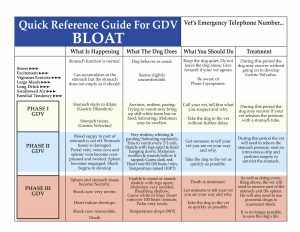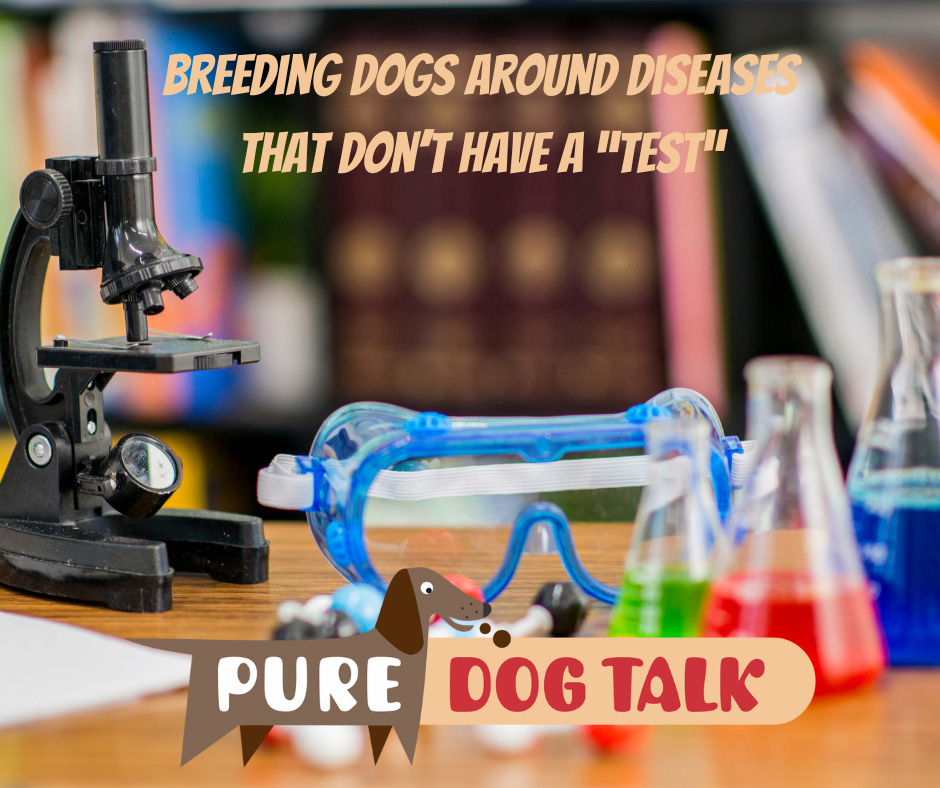698 – Three Words That Strike Fear in Vets and Owners
Three Words That Strike Fear in Vets and Owners
Host Laura Reeves is joined by Dr. Marty Greer talking about the three words that strike fear in both veterinarians and owners.
“These three things are what can take a normal, easy, lovely day at the veterinary clinic and turn it upside down and cause clients to have to wait and then swear at their veterinary team because they don’t understand why they have to wait because they had an appointment,” Greer said.
Those three words, according to Greer, are GDV (bloat), Pyo (pyometra) and HBC (hit by car).
Refresher on these three critical care situations:
Pyometra is a uterine infection.
“Fevers are almost never seen with pyometras,” Greer said. “And it’s a hard thing to understand how you can have a uterus full of pus and not run a fever. But apparently the uterus is a privileged organ and it allows for foreign things to happen in it. That could be a pyometra. That could be a puppy.
“So unfortunately, they almost never run a fever, so don’t rely on that to be a symptom. If you were waiting for a fever to happen, it means that the uterus probably just ruptured and the dog now has a belly full of puss instead of just a uterus full of puss. And when your belly is full of puss, you’re in big trouble. And so, if you’re waiting for a temperature, you’re decreasing your dog’s odds of survival.
“If your dog was recently in heat, they aren’t feeling well, they’re not eating well, they’re perhaps drinking buckets and buckets of water, maybe vomiting, maybe have a vaginal discharge, maybe not. Do not wait for a fever (to take the dog to the vet).”
GDV (gastric dilatation and volvulus) is bloat, where a dog’s stomach fills with air and may twist, causing a very rapid cascade of life-threatening events in the dog’s system.
HBC (hit by car) and other trauma is covered in our K9 911 First Aid seminar series linked here.
652 – Breeding Dogs Around Diseases that Don’t Have a “Test”
Breeding Dogs Around Diseases that Don’t Have a “Test”
Host Laura Reeves is joined for part two of her impactful conversation with Aimée Llewellyn-Zaidi, Project Director, IPFD Harmonization of Genetic Testing for Dogs at International Partnership for Dogs.
Today’s conversation covers some of the biggest hot button diseases impacting all dogs – seizure disorders, cancer, bloat and other life-threatening issues.
Llewellyn-Zaidi offers insight, information and details about new tests coming online and the ways we can minimize risk while working with small gene pools.
“(S)ome cancers are just kind of part of dogs, just being a dog. Or sometimes they’re part of being a type of a dog, like some types of dogs are more likely to be at risk than others, whether it’s size -related or maybe they’re a herding breed, and it’s just at some point in ancient times, (when we) started dividing out into generalized proto-breeds, when we started having our wolfie looking ones and spitzy -looking ones, and we started having our molosser looking ones, and we started having our retrieving looking ones. Before they were such distinctive breeds, there would have already been selection causing inbreeding and increasing some genetic duplication to get those desirable traits.
“And you may bring some things along with that. So some of these cancers are not specific, necessarily, to your breed and they’re just specific to that type of dog.
“With cancers there are two cancer tests that are available to all dog breeds or all dog types. There is something called a C -kit somatic mutation for mast cell tumors. All of this is on www.dogwellnet.com so you can check it out. And there’s also the BRAF mutation, so invasive transitional cell carcinoma. That’s for all dogs as well. And for my dear beloved Bernese people, there’s histiocytic malignancy that’s available as a genetic test as well.
“So for some of these specific cancers and specific epilepsies, there are genetic tests available that you can use to help you maybe make some decisions or at least to eliminate what might else be going on, right? So you know if you’re not quite sure what kind of a cancer it is, the genetic test might help give you some information on that.
“All of this really comes down to how risky do you feel? We can rebuild any breed from scratch if we needed to. It would just take a lot of time and a lot of effort and a lot of consideration. So in some ways, being very radical, and I’m setting health and welfare aside for just a second, being very radical, it’s kind of up to a breed to make a choice. Do you want to keep breeding to your breed standard until you reach a point of too much poor health and inbreeding depression and then you start again?
“Or do you want to try to conserve and maintain kind of where you are now? Or do you want to try to improve or expand your genetic diversity from where you are now?
“And all three of those kind of philosophies are acceptable, assuming you’re keeping at least welfare in mind. And all three of those philosophies probably will fit all the different kinds of breeds in their unique situations.
“Followed very closely by conserving that breed type or those breed qualities that are important to you, right? That’s the point. That’s the point and the pleasure and the art side, right?
“So if you’re keeping in the back of your mind those chess moves, whether it’s ‘I’m gonna use this type for a couple of times because I really like that or I want to introduce that and then I’m gonna have a couple of litters where I go out and just kind of rebuild that diversity and then maybe go back to that type I happened to like,’ that’s how you kind of weave through the genetic variation that you have within your breed population.
“You probably can’t do that forever unless you’re very, very lucky as a breed, like you can’t do that forever, but you can probably do that for quite a long time.”
468 – Bloat 911: Know the Signs, Be Prepared
Bloat 911: Know the Signs, Be Prepared

PRINT this chart for reference in your dogs’ area.
Dr. Marty Greer, DVM joins host Laura Reeves for a primer on one of the most terrifying and emergent situations we can encounter with our dogs – bloat. Most noted in large and giant breeds of middle to advanced age, Greer notes that small dogs and puppies are not immune.
“There are parts of this that no one still understands,” Greer said, “even though we’ve known about gastric dilatation volvulus, GDV or bloat, for decades and decades. I mean, when I was in veterinary school, it was a big deal. Unfortunately, we have still a lot of holes in the knowledge we have about it.
What happens
“Essentially what happens is the stomach fills with fluid, air, food, different materials and in gastric dilatation it dilates. In gastric dilatation volvulus it dilates and then rotates inside the abdomen.
“It can be one or both. The distinguishing feature is going to be available only by X Ray. Just looking at a dog at a dog show or in your hotel room or at your house and your kennel, in the veterinary lobby, you can’t tell the difference between a volvulus and a dilatation. So, an X Ray is needed to determine what’s going on.
Why it happens
“(When) material starts to fill the stomach and it starts to dilate, there’s some kind of an outflow obstruction, which is not clearly identified, which keeps the fluid and gas from being able to go down into the small intestine. The stomach dilates further and further and further …gas is produced either by fermentation or by gulping air.
“The dogs typically will attempt to vomit, but are unproductive in their efforts …That’s probably the one distinguishing thing that you can determine when you’re looking at a dog, as the abdomen is distended… if they’re able to productively vomit, food is coming up, fluid is coming up, it’s probably not a boat. If their efforts to vomit are unproductive, you have a genuine life crisis medical emergency on your hands and you cannot get to a veterinary clinic for care fast enough.
“The problem is this becomes this really vicious cycle of metabolic and respiratory and circulatory disasters that just feed on each other. As soon as the stomach starts to fill with gas, the dog develops acidosis. They can’t produce any vomit. The stomach starts to press on the diaphragm, so they can’t breathe adequately. And then their circulation starts to slow down because there’s pressure on the vena cava.
“There are all these metabolic cascades that start to happen that become a vicious cycle. One makes the next part worse, which makes the next worse, which makes the next worse. Which is why the dogs decompensate and die of shock or ruptured stomach or cardiac malfunctions.
What can you do?
“There are some correlations that people have made with the time of eating and the amount of exercise afterwards, but there’s not a strong correlation. You can follow every single guideline that you possibly have ever read about to try and reduce the risk of it. And it can still happen anyway. That’s what’s really devastating about it … You feel really helpless because you can’t prevent it and you can’t predict it. And when it happens, it doesn’t matter what time of the day it is. You need immediate medical care. Half an hour ago.
“(The stomach is noticeably distended)… it can sound like a watermelon when you thump it… so if there’s any possibility, a little inkling that something is not right, if a dog is restless, won’t lay down, won’t eat, won’t drink, and it’s really non-productively trying to vomit, you go get an X Ray. Period, end of discussion.
“You call the emergency clinic on your way. You tell them what you have for a breed, the circumstances and you say I’m coming in for an X Ray. And you hope to God that there’s not six other really serious medical emergencies ahead of yours so that you can get the immediate attention that’s required.
“If you have the option of going to two different practices, you’ll probably want to call ahead and see who can accommodate you when you arrive, because there is no sitting in the parking lot and waiting. There is no calling in the surgeon. There is no ‘we’ll get around to you when we get around to you.’ It is right now.”
Listen to the rest of our conversation to learn about passing a stomach tube to give the dog more time, prophylactically tacking the stomach, potential genetic predisposition that can impact breeding decisions and more.
Listen HERE for our previous podcast on first aid for bloat and other emergencies.



